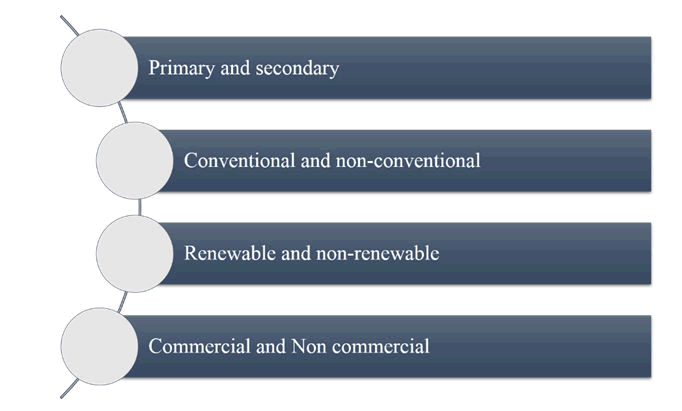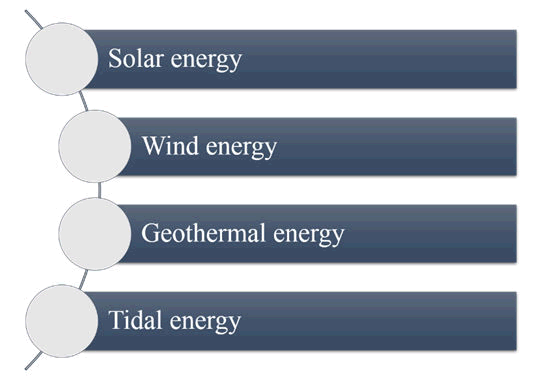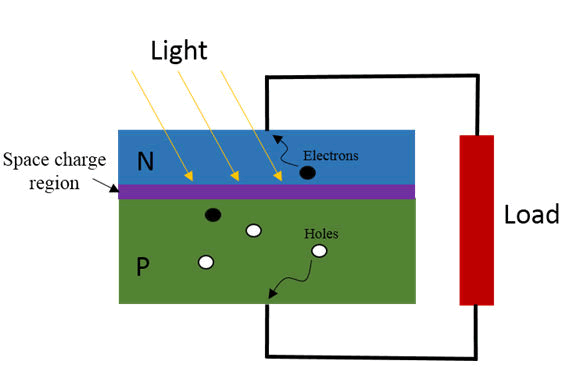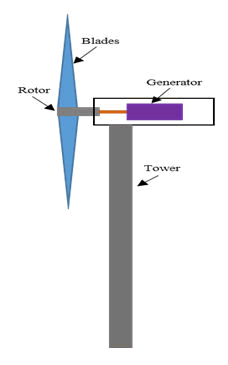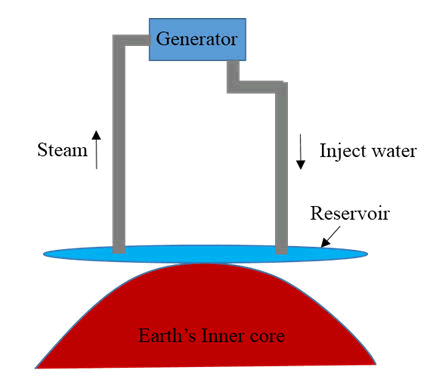Review Article, J Nucl Ene Sci Power Generat Technol Vol: 11 Issue: 4
An Overview of Energy Resources and Their Classification
Prasanna Mishra1*, Archana Chaudhary1, Suresh Kaswan2 and Krishnaraj Singh3
1Department of Physics, SGT University, Gurugram, Haryana, India
2Department of Electrical and Electronic Engineering, RIMT University, Mandi Gobindgarh, Punjab
3Department of Electrical and Electronic Engineering, Sanskriti University, Mathura, Uttar Pradesh, India
*Corresponding Author: Prasan na Mishra,Department of Physics, SGT University, Gurugram, Haryana, India; E-mail: prasannamishra234@gmail.com
Received date: 03 November, 2021, Manuscript No. JNPGT-21-46569;
Editor assigned date: 05 November, 2021, PreQC No. JNPGT-21-46569 (PQ);
Reviewed date: 19 November, 2021, QC No. JNPGT-21-46569;
Revised date: 03 January 2022, Manuscript No. JNPGT-21-46569 (R);
Published date: 23 March 2022, DOI: 10.4172/2325-9809.1000268
Citation: Prasanna M, Archana C, Suresh K, Krishnaraj (2022) An Overview of Energy Resources and Their Classification. J Nucl EneSci Power Generat Technol 11:4.
Abstract
Energy is considered as one of the most fundamental element for the country’s economic development. From thousands of years, energy has been utilized in many ways in order to carry out various activities by human beings. The energy can be classified in many ways depending upon the different factors such as availability, usage and processing etc. Among the all types of the energy resources, it can be broadly classified into renewable and non-renewable energy resources. Around the world, maximum energy is generated through the conventional sources like coal etc. The major drawback of the nonrenewable energy resources is unavailability and it generates various forms of the pollution. Renewable energy resources (i.e., wind, solar energy and ocean energy etc.) are considered one of the best and promising alternate of the conventional resources. These resources are available in nature in unlimited quantity and doesn’t generate any kind of pollution. This review paper highlighted the various types of the energy resources and their associated aspects. The utilization of the renewable energy resources by various sectors can help to mitigate the pollutant concentration significantly and promote the energy security
Keywords: Energy resources, Fossil fuel, Non-renewable energy resources, Renewable energy resources, Solar energy
Introduction
Flow of energy is one of the most fundamental processes that are required by humans or nature for carrying out any physical activity. Energy has an important role in terms of socioeconomic development. Energy is used in various sectors such as industrial, domestic, agricultural and transportation for performing the different activities. Machines, consumer goods and vehicles etc. runs of the energy resources [1]. The energy can be classified in many ways but the broader classification could be done grounded on the availability. Conventional resources are utilized for the different purposes from many decades. The most common non-renewable energy resources are fossil fuel, coal and nuclear energy etc. Fossil fuels such as diesel and petrol can be directly used in the motor vehicles, machines and tools [2]. These energy resources sometime utilize for the generation of the electricity also. Coal is the major non-renewable energy resource for the generation of the electricity. Non-renewable energy resources have huge potential to fulfil the demand of the energy by growing population of the world but due to the large scale consumption, this energy resources availability is declining continuously. Apart from this challenge, the major drawback of the non-renewable energy resources is that it increases the level of air pollution [3].
In contrast, renewable energy resources offer various advantages over the non-renewable energy resources such as availability and there is no generation of the harmful and toxic gases to the environment. Some of the examples of the sustainable drives are wind, ocean power, solar power and geothermal power etc. [4]. Due to the various drawbacks associated with the consumable drives, the utilization of sustainable resources promotes at greater scale. Various government organization as well as private organizations gives attention to these energy resources so that pollution level can be reduced significantly [5]. Among the all energy resources, solar energy is widely utilized for the different purposes such as cooking, water heating and electricity generation etc. In the solar technology, solar thermal energy captured by the system in order to process further. In some cases, solar energy is directly consumed and in some cases it processed and converts to another energy resource, i.e. photovoltaic cells. PV cells have huge potential to fulfil the demand of the electricity in the isolated areas [6]. This review paper provides an overview of various resources of drive as well as their classification. The paper will discuss every aspect of the energy resources and their technologies to generate the electricity. This paper will also discuss about the energy consumption scenario in Indian perspective for understanding the growing demand of the energy in India.
Literature Review
Energy and their classification
As discussed, energy is one of the most basic components that are requiring in order functionalizing any system. Energy can be classified in many ways depending upon the usage, availability and processing etc. (as illustrated in the Figure 1). The growing population of the world demand more energy consumption due to which the electricity generation organizations puts extra efforts to produce the electricity at greater scale. But there are many hurdles in order to fulfil the growing demand of the energy.
Each energy class consists of various energy resources and each energy resources have its own advantages and disadvantages. Depending upon the application, any energy resource can be choosing in order to fulfil the requirement of the energy. The demand of the energy is continuously increasing and it can be fulfilling only through the proper availability of the energy without having any kind of the drawbacks [7]. The detailed description of each energy resource is highlighted in the Table 1.
| Energy classification | Description |
|---|---|
| Primary and secondary | Primary: Primary energy resources are referring to the raw energy forms that are available or stored in the nature. For example, coal, bio mass and oil etc.Secondary: The primary energy resources can be process in order to convert it to another form of drive resources like electrical energy and steam. The processed energy are generally refers to the secondary energy resources. |
| Conventional and non-conventional | Conventional: Conventional energy resources are defining as the energy resources that were utilized during the oil crisis time period. Examples, petrol, diesel and nuclear power etc.Non-conventional: Conventional energy resources refer to those energy resources which start utilizing just after the oil crisis. Some of the examples of the non-conventional are solar, wind and tidal energy etc. |
| Renewable and non-renewable | Renewable: Renewable energy resources are referring to the energy resources that never run off in terms of availability. These energy resources are also known as the nature’s energy resources.Non-Renewable: The energy resources which are available in limited quantity is known as the non-renewable energy resources. Majority of the energy demand is fulfilling by the conventional resources. Coal is the leading resource in this category that is greatly consumed for fulfilling the demand of the energy. |
| Commercial and non-commercial | Commercial: The energy resources which are available in the market at certain price. In order to use energy resources, people need to spend some money. Examples, fossil fuels, electricity and nuclear energy etc.Non-commercial: The energy resources which are not available in commercial market for the usage. It is mostly available in the nature so that humans can utilize these energy resources directly without spending any money. Examples, solar energy and wind energy etc. |
Table 1: Classification of the Energy Resources and Their Detailed Description.
Renewable energy resources and their classification
Energy demand is growing each year due to growth of population of the world. The most of the energy demand fulfill by the non-renewable energy resources. These energy resources have been utilizing from the many decades. But, now non-renewable energy resources run off in terms of quantity. The storage of these energy resources is declining at faster rate. The another drawback of these resources is pollution [8]. These kinds of resources emit the air pollution at greater scale. In order to overcome such challenges, researchers find new energy resources named renewable energy resources. These energy resources are available in the nature in unlimited quantity and almost negligible air pollution is generated by utilizing the sustainable resources. Examples of this type resources are illustrated in the Figure 2.
Sustainable energy resources are well known from thousands of years and earlier people were using for the sailing and other purposes. As time passes, the demand of the energy increases due to which people were switched towards the non-renewable energy resources because it has huge potential to fulfil the demand of the growing population. Over the time, the consumption of the non-renewable energy resources increases due to which the air pollution level increases to danger level [9]. The current situation of the world is bad; the utilization of the non-renewable energy resources increases the level of harmful as well as toxic gases increases to the next level. The increasing level of these gases cause the climate change and global warming. The challenges associated with the non-renewable energy resources gives the spark to the renewable energy resources. In recent years, renewable energy resources gained significant amount of attention of many researchers because it has huge potential to fulfil the demand of the energy by growing population. Various government as well as private organizations starts giving an importance to the renewable energy resources. Hydro energy and solar power are the major resources which greatly explored for the electricity generation. In recent years, various solar plants have been established for the electricity generation. In India, large amount of electricity has been generated through the hydropower.
Solar energy
Solar power is considered as main promising sustainable drive resource which has been utilizing from many years [10]. Solar energy is kind of thermal energy that is produced by the sun. This solar energy received at the earth in the form of thermal energy [11]. Solar energy can be utilized in two ways:
- Direct utilization as a thermal energy, for example for cooking and water heating and,
- Solar can be convert to the another energy resource such as electricity.
Electricity generation is potential application of the solar power [12]. This energy resource is very prominent and useful for the rural as well as isolated places for fulfilling the demand of the electricity. For the electricity generation by utilizing the solar energy is based on the photovoltaic cell or PV cell [13]. PV cells are nothing but a semiconductor device that is based on the extrinsic semiconductor. For the PV cell development, silicon material is mostly use for the fabrication. It is a kind of the PN junction diode that consist of the two extrinsic semiconductor materials, i.e. one is n-type and second one p-type [14]. In order to form the solar panel based on the PV cells, large number of the PV cells are interconnected [15]. The basic structure and operation of the PV cell is highlighted in the Figure 3.
When a P-type and n-type semiconductor bonded with each other than electrons of n-type block move towards p-type block and holes of p-type block moves towards the n-type block. These charge carriers meet near the PN-junction and recombine with each other and vanish. The process continuous and donor and acceptor ions are collected at interface. When enough ions collected at interface that means enough donor ions (+ev ions) accumulated at the n side near the junction, it applies an opposite electrostatic force to the holes of the p-type block to cross the junction. Now a layer is created near the junction. This layer is known as depletion layer of space charge region. The layer consists of immobile ions as well as large number of covalent bonds [16]. After forming the pn-junction, when a sunlight falls at the interface or PN junction, due to the thermal energy of the sunlight, large number of the covalent bonds are break that leads to the creation of the large number of the electron hole pairs. Since these charge carriers has opposite polarity that is why both charge carriers move towards the opposite terminal. The movement of the charge carriers generates the electric current in the circuit. This electric current can be directly utilized for the different purposes such as light and fan. Sometimes there is no need of the electricity in day time, more particularly in the winter season. So the generated electricity can be stored in the batteries so that electricity can be utilizing when require. The storage of the solar energy generated electricity is very expensive because storage system itself an expensive technology [17].
Wind energy
Wind power is another type of the sustainable drive resources that is mostly utilized for the electricity generation. In order to generate the energy, the flow of the wind or air is used. The most common system that has been utilized for the electricity generation is called wind turbine. These systems consist of the tower, blades and generator. The basic configuration of the wind turbine is shown in the Figure 4.
Each component of the wind turbines plays an important role in the electricity generation. Each component designed in a way so that optimum electricity can be generated from the wind energy. The size as well as dimensions are the dominating factor for the electricity generation because the capturing of the wind is greatly depending on the size. The detailed description of each component is described in the Table 2.
| Componet | Description |
|---|---|
| Blades | The main function of the turbine blade is to lift as well as rotates when wind cross through them. In general, the wind turbines consist of the two or three blades depending upon the type of the wind turbines. The size of the wind turbine defines how much wind it can cross over through it. When the blades are larger than it can process large amount of wind resulting in greater amount of electricity generation. |
| Rotor | The rotors are connected to the turbine blades and when wind cross over the blades, it rotates the rotor that is interconnected to the blades of the turbine. The major function of the rotor is to rotate the system. |
| Generator | Generator is one of the most important components of the wind turbine. In general, it is connected to the rotor through the gear box. When the wind flows over the blades, the rotor rotates the generator that leads to the electricity generation. Generator converts the rotational energy to the electrical energy. |
| Tower | The whole wind turbine system is established at some height where the wind can be easily captured that is why the turbine fix at some height by utilizing a tower. |
Table 2: List of the Major Components of the Wind Turbine and Their Detailed Description.
Geothermal energy
Geothermal energy refers to the earth’s core energy. The centre part of the earth (i.e. core) has extremely high temperature as the surface of the sun. This thermal energy is known as the geothermal energy. Geothermal energy is greatly depending on the geographical location that is why it is not available everywhere. Geothermal energy majorly utilizes for the electricity as well as steam generation. For the electricity generation, a two holes are made inside the earth that reach to the inner core of the earth where temperature is extremely high. Now, the water is injecting from one hole and reserves near the core of the earth Due to the extremely high temperature, the reserved water converts to the steam. The pressure of the steam is extremely high. The steam takes out from the another hole and goes to the turbines. The high pressure of the steam rotates the turbine resulting in electricity generation. The basic configuration of the geothermal energy based electricity generation system is shown in the Figure 5.
Tidal energy
Tidal energy is also known as the ocean energy. Tidal energy generally refers to the tides that has been generated in the ocean. The tides of the ocean can be utilizing for the generation of the electricity. Tidal energy is mostly utilizing for the electricity generation but the major drawback of the tidal energy is uncertainty. It is greatly depending upon the weather conditions. The processing of the tidal energy is not easy because it requires sophisticated systems in order to produce the electricity. Establishment of the tidal energy based electrical power production system is costly. In comparison to other energy resources, this resource is not utilizing at greater scale due to the discussed drawbacks. Since tidal energy is location specific that is why it cannot be utilize anywhere. In order to make this technology to be mature, extensive research and development is requiring. This sector facing the financial crunch to establish the expensive system.
Discussion
Nature is one of the biggest sources of the energy. Earlier people were utilizing various energy resources in order to perform the human activities. Nature provides them woods that has been utilized by the peoples to cook the food. As time passes, the demand of the energy increases because of the significant growth in the population of the world. The humans start utilizing the non-renewable resources for fulfilling their energy demands because conventional resources has huge potential. Major most common conventional resources are fossil fuels, coals and nuclear energy. These energy resources are used as primary energy resource and can be utilized for the generation of the secondary energy resource such as steam and electricity etc. The major drawback of the non-renewable energy resources are availability and air pollution generation due to which there is need to find new energy resources. From the last few decades, renewable energy resources gained significant amount of attention of many researchers because it can be considered as one of the best and promising alternative of the non-renewable energy resources. The major advantages of sustainable drive resources are availability as well as it doesn’t produce any kind of the pollution. In recent years, renewable energy resources are greatly utilized for the electrical power production for fulfilling the growing demand of the electrical energy.
Conclusion
Energy resources are widely utilized in various sectors such as industries, transportation and agriculture etc. It plays an important role in our daily to daily life. The existing technologies are mainly based on the non-renewable energy resources. Coal and petroleum are most common conventional drive resources that has been utilized for the electricity generation, heat generation and can be directly use as primary energy resources such as in motor vehicles and machines etc. As the population grows, the consumption of these energy resources are also increasing significantly that leads to the increase level of the air pollution. Fossil fuel and coal based motor vehicles generates the harmful gases at greater scale that leads to the climate change and global warming. In order to overcome such challenges, non-conventional energy resources (i.e., wind, geothermal as well as solar energy) have been explored at greater scale. The major advantage of these energy resources is availability. Renewable energy resources never run off in terms of availability. Despite of having many advantages, renewable energy resources are still not utilizing at greater scale for commercial purpose. It is recommended that extensive R and D needs to be done and government must draft a proper framework in order to establish the renewable energy based systems so that initial establishment cost can be reduced. These steps will help to take this technology at commercial level.
References
- Samanta A, Burden AC, Jones AR (1985) Plasma glucose responses to glucose, sucrose, and honey in patients with diabetes mellitus: An analysis of glycaemic and peak incremental indices. Diabet Med 2: 371-373.
- Shetty J, Marathe GK, Dighe RR (1996) Specific immunoneutralization of FSH leads to apoptotic cell death of the pachytene spermatocytes and spermatogonial cells in the rat. Endocrinol 137: 2179-2182.
- Silva TMS, Camara CA, da Silva Lins AC, Barbosa-Filho JM, da Silva EMS, et al. (2006) Chemical composition and free radical scavenging activity of pollen loads from stingless bee Melipona subnitida Ducke. J Food Composit Analy 19: 507-511.
- Sinha-Hikim AP, Swerdloff RS (1993)Temporal and stage-specific changes in spermatogenesis of rat after gonadotropin deprivation by a potent gonadotropin-releasing hormone antagonist treatment. Endocrinology 133: 2161-2170.
- Stamatiades GA, Kaiser UB (2018) Gonadotropin regulation by pulsatile GnRH: Signaling and gene expression. Mole Cell Endocrinol 463: 131-141.
- Svec F, Porter JR (1998) The actions of exogenous dehydroepiandrosterone in experimental animals and humans. Proceed Soc Experim Biol Med 218: 174-191.
- Themmen AP, Huhtaniemi IT (2000) Mutations of gonadotropins and gonadotropin receptors: Elucidating the physiology and pathophysiology of pituitary-gonadal function. Endocr Rev 21: 551-583.
- Wang X, Morris ME (2007) Effects of the flavonoid chrysin on nitrofurantoin pharmacokinetics in rats: Potential involvement of ABCG2. Drug Metabol Disposit 35: 268-274.
- Wang Y, Chen F, Ye L, Zirkin B, Chen H (2017) Steroidogenesis in Leydig cells: Effects of aging and environmental factors. Reproduction 154: R111-R122.
- Waters SB, Conn PM (1991) Regulation of the pituitary gonadotrope by gonadotropin-releasing hormone: Multiple intracellular effectors. Chinese J Physiol 34: 1-26.
- Kleinert S, Horton R (2015) Rethinking and reframing obesity. The Lancet 385: 2326-2328.
- Wickings EJ, Nieschlag E (1980) Suppression of spermatogenesis over two years in rhesus monkeys actively immunized with follicle-stimulating hormone. Fertil Sterility 34: 269-274.
- Wickings EJ, Usadel KH, Dathe G, Nieschlag E (1980) The role of follicle stimulating hormone in testicular function of the mature rhesus monkey. Euro J Endocrinol 95: 117-128.
- Günes UY, Eser I (2007) Effectiveness of a honey dressing for healing pressure ulcers. J Wound Ostomy Continence Nurs 34: 184-190.
- Ying SY (1988) Inhibins, activins, and follistatins: Gonadal proteins modulating the secretion of follicle-stimulating hormone. Endocr Rev 9: 267-293.
- Yousef MI, Salama AF (2009) Propolis protection from reproductive toxicity caused by aluminium chloride in male rats. Food Chem Toxicol 47: 1168-1175.
- Yousef MI, Kamel KI, Hassan MS, El-Morsy AM (2010) Protective role of propolis against reproductive toxicity of triphenyltin in male rabbits. Food Chem Toxicol 48: 1846-1852.
 Spanish
Spanish  Chinese
Chinese  Russian
Russian  German
German  French
French  Japanese
Japanese  Portuguese
Portuguese  Hindi
Hindi 